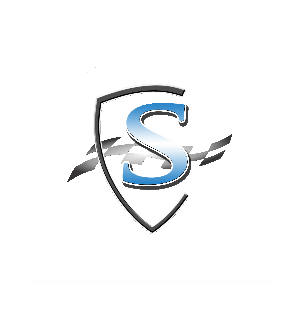Polycarbonate: What Had Never Been Done
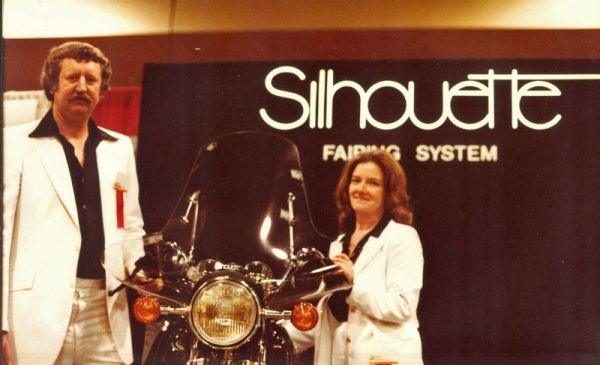
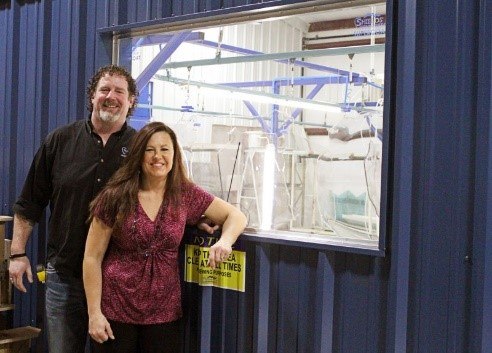
Introduction
Polycarbonate is a material discovered in the early 1900s but not harnessed and implemented in mass production until the 1970s. Even though it has been around in mass production for half a century, many people do not know about polycarbonate. This material has impacted many industries since the 70s. The medical fields, architectural use, the racing world, and most recently the construction world. The one aspect that all of these industries have in common is that polycarbonate was and is used to replace the glass! Polycarbonate can be a clear plastic and it is half the weight of glass and 260X stronger than glass. Making it the perfect replacement for glass; however, as anyone in the industry knows, it is a complicated material to work with when dealing with optical polycarbonate.
It was right around the time that polycarbonate was being produced on a large scale in Europe that Bill Shields, founder of Form/Tec Plastics, began using this new material that was taking over the medical and architecture fields. Starting off on a smaller scale with face shields for racing helmets; this leads to the creation of SHIELDS® from Bill's son, Brad Shields. At the turn of the century, Brad took the companies years of knowledge and skills with face shields
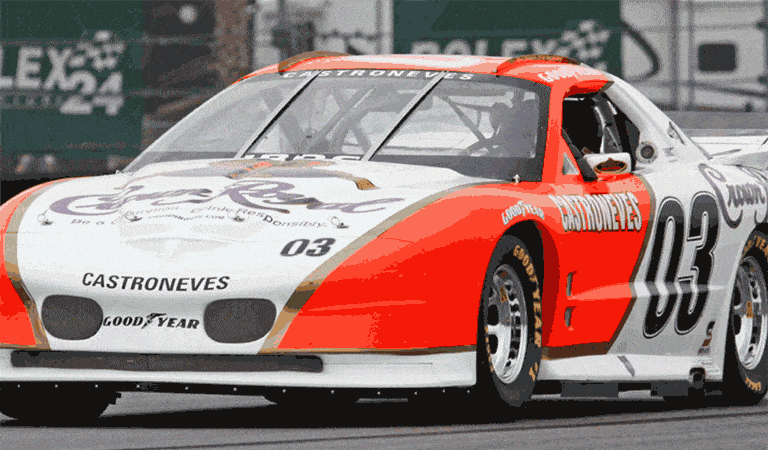
and scaled up their production to create a polycarbonate racing windshield for the IROC Series. Polycarbonate was being used in the racing world for windshields, but they were missing an important component that SHIELDS® was able to offer. That is their proprietary SUPERCOAT™. Polycarbonate is known for its strength but also known to scratch and haze making the windshield unusable after a little time. This "softness" of the polycarbonate is what gives it strength, but obviously, you need to be able to look through your windshield and that is where their coating enhances polycarbonate! SHIELDS® had been coating their face shields in-house for years and was able to scale up production to coat these car windshields. To this day, SHIELDS® is known for its ability to beautifully coat large and complex shapes. This coating is a hard silicone-based coating that is scratch-resistant to steel wool. It was a game-changer in the polycarbonate world to be able to offer this hard-coating on a large scale.
SHIELDS® Polycarbonate Process
SHIELDS® and many of its employees have been working with this complicated material for over 45 years now. This experience and the knowledge that they have gained over the years is why they claim to be the world's best polycarbonate formers. Forming is taking a flat sheet of polycarbonate and creating a specific desired shape our of it. Staring with a flat sheet of polycarbonate, they then trim the sheet down to optimal size to create the shape they want to make. Then they go through their proprietary forming process. This process along with their coating is what sets SHIELDS® apart from other polycarbonate manufacturers. There are many ways to form plastic and SHIELDS® is classified as a thermoformer. This means they use heat and a mold to create the shape they desire. The tricky part to this is everything they form is made to optical standards. The temperature, the mold, and the timing have to be just right.
Once the desired shape is created the part is passed into their class 10,000 cleanroom to be examined. This is an important process because it the last step before coating the parts. Coating polycarbonate is not simple or cheap so every part that goes into the coating room must meet standards. Once coated the parts are protected and can be finished. SHIELDS® has a few different ways to finish their parts. They get trimmed by hand or by one of their 4 CNC machines. This is determined by the volume and details of the part. The finish trim of the part is key for the windshield to fit properly.
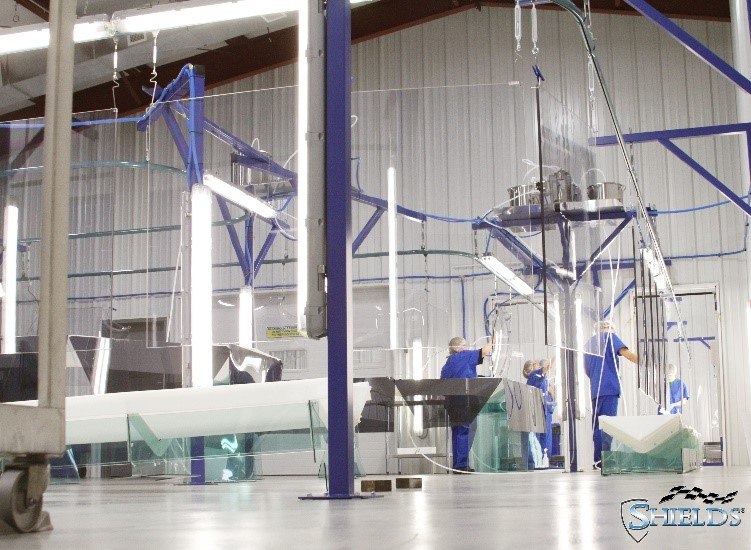
SHIELDS® makes its parts to match the Form, Fit, and Function of OEM glass. A big part of that is the CNC finish trim. In the mid-2000s SHIELDS® saw a need for polycarbonate in the agriculture and construction industries, thus launching their Heavy Equipment product line. The finish trim on these products is crucial to their line because of the thickness of the parts. SHIELDS® main heavy equipment polycarbonate windows are 1/2" thick parts that replace 1/4" glass. This is for safety and to keep the operator's windshield from breaking on the worksite. Going from 1/4" to 1/2" requires
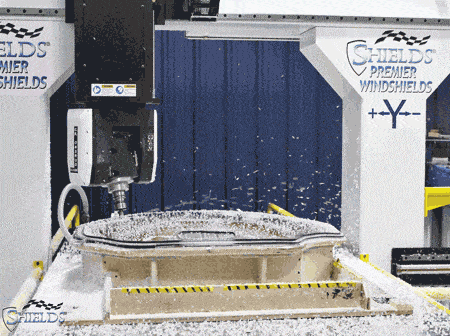
that SHIELDS® trim down sections of their parts to fit 1/4" hardware! Easy to put into words but not so easy to produce. But this experience and skill set led SHIELDS® to do something no one has done in the construction industry before!
3 Pieces of Glass to a 1 Piece Windshield
SHIELDS® had a customer approach them with a project that was something polycarbonate had yet to do! This customer had a fleet of Volvo Wheel Loaders. These wheel loaders had this massive three-piece glass windshield. The customer's complaint was that these windshields break ALL the time, and they were expensive to replace. He was looking for a polycarbonate replacement. SHIELDS® was able to do even better than replacing the three pieces; they made it all into one GIANT beautiful windshield. Seems simple on paper but what a challenge this really was. Their customer brought the entire wheel loader to the factory so the engineering team could work on it. The glass being in three pieces not only was hard to replace but it obstructed the operator's view with giant lines of silicone in the middle! There was a lot of improvement that this windshield needed.
First, the SHIELDS® engineering team had to remove the glass without breaking it. This is crucial, in order to get a perfect fit, the glass has to be intact enough to scan it. The next step was to replicate the curvature, so the polycarbonate windshield had the correct size and shape. Now since the three-piece windshield was not one piece it the engineers had to add some shape in the windshield for it to fit correctly. This part of the process is a combination of CNC, CAD work along
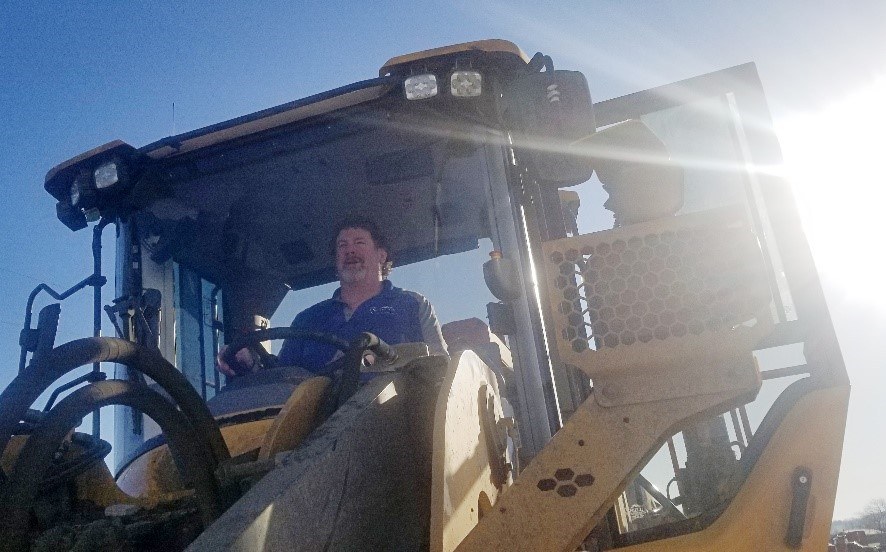
with hand-developing tooling. Once the tooling is complete the initial prototypes are made. In-house prototypes are primarily to test fit. This part went through the entire process excluding coating. Now the windshield SHIELDS® made was 1/2" replacing 1/4"; therefore, they had to finish trim the windshield down so the polycarbonate fit the original frame. Once the prototype fit, they went into full production for the cab. The only step that was added to this process was adding fritting to the part. Frit is the black strips usually along the edges of windshields. This fritting is important for parts that install via adhesive. With the SUPERCOAT™ hard coating being silicone-based the adhesives will not permanently stick to the windshield and after sometime this could cause problems. They add frit to the edges as a primer for the adhesive and it also adds a nice aesthetic. This happens after the CNC machine works its' magic.
In only THREE WEEKS their engineering team was able to completely design and create this windshield, install it and deliver it to their customer. (Oh, we cannot forget they also replaced ALL the other windows on the cab)! On the customer's end, this is huge because of the strength of the polycarbonate he won't have to replace the windshield due to breaking every month. His operators are safer, and he is saving thousands of dollars! For SHIELDS® a typical lead time for new projects is six to eight weeks. From design, developing the molds, and having general production times there is a lot to it! The fact that their team was able to deliver this windshield in three weeks is incredible! Also, talk about a beautiful view for the operator! This small business pulled off a feat that had never been done in the polycarbonate world.
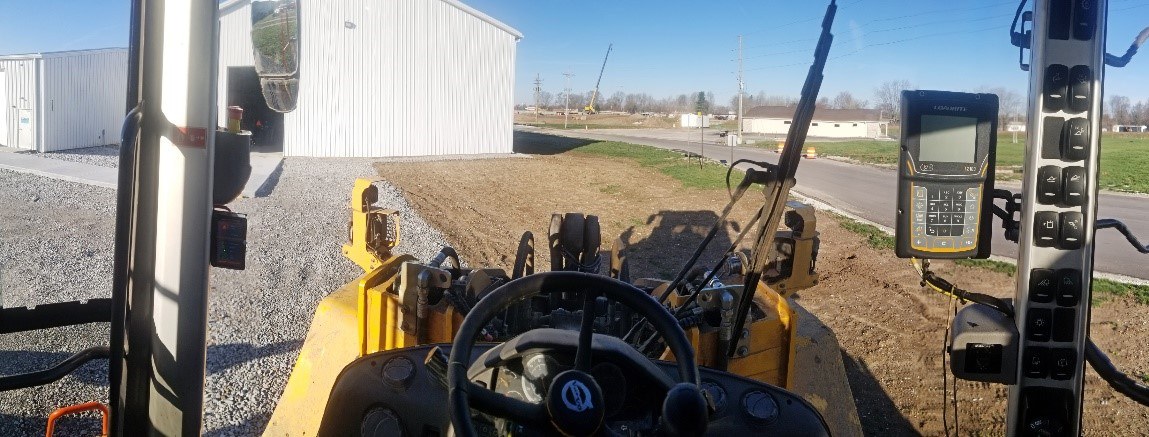
Future of Polycarbonate
The example of incredible engineering of polycarbonate above is where SHIELDS® believes the world of polycarbonate is going. The heavy equipment industry's demand for polycarbonate is increasing every year. SHIELDS® is constantly adding new products to their equipment line strictly coming from customer demand. The industry is learning about the safety, cost-effectiveness, and efficiency that polycarbonate offers them. SHIELDS® future with polycarbonate
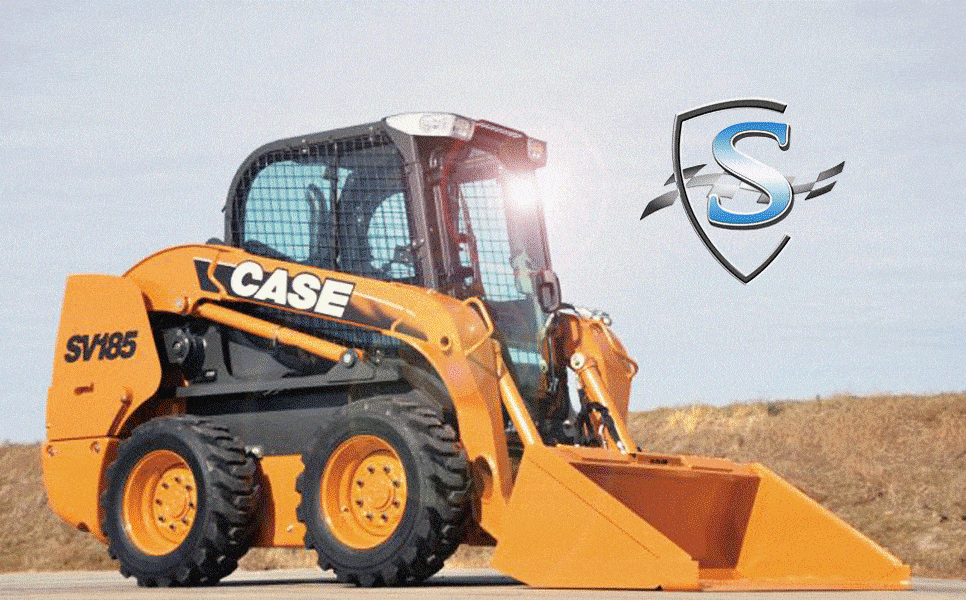
looks to point toward thick gauge (1/2" and up) polycarbonate for the safety of operators. Polycarbonate's quick growth in the heavy equipment industry has been noticed by many. Large plastic companies have dipped their feet in the world of forming optical poly, but not many with success. Especially when it comes to complex shapes and large sizes. What SHIELDS® does is not just about mass manufacturing but a marriage of engineering and art. Something that takes years of experience and it takes people. As they see it right now their production cannot be done without direct hands-on work from employees. SHIELDS® still manufactures windshields for racecars, boats, and custom OEM work but, as the future of polycarbonate continues to grow in the heavy equipment industry SHIELDS® plans to grow with it. They will continue to provide the industry with large, beautiful, safe polycarbonate replacement windows.
Your SHIELDS® Team

